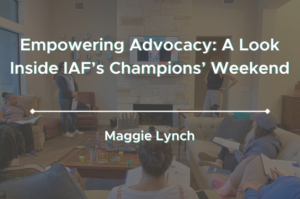Chuck DiTrapano, RPh shares a habit that eventually became something more. He tell the story of how a simple “C” written in blue pen came to carry so much power and responsibility.
 Ever since my very first day on the job as a hospital pharmacist, I have placed a “C” using a blue Sharpie on every single label that I have ever checked.
Ever since my very first day on the job as a hospital pharmacist, I have placed a “C” using a blue Sharpie on every single label that I have ever checked.
While the “C” stands for Chuck, there’s no good explanation as to why this seemingly insignificant little marker chose me. I guess the first time I ever checked a prescription, I picked up a blue Sharpie. Ever since that day, it is the only pen I would ever use.
Power of the Pen
Many of us who work in pharmacy have certainly considered the positive impact that we have on patients and fellow healthcare providers. In fact, most of us became pharmacists first and foremost because we wanted to help people.
I believe there are many of us that have not considered the tremendous power that the simple act of putting pen to paper can actually have.
I know that over the years my “C” has been placed on prescriptions that helped a patient recover from an illness or helped a NICU baby beat the odds. I know that my initial has done a lot of good.
I trust that my “C” has never done a patient harm. None of us in this profession would ever want to think of that possibility. The fact is that when you experience a “Near Miss”, as I have, it makes you look a lot closer, double check your work, and then check it again. It can also be pause to examine what is really important in your career and your life.
For me, it became the driving force for the development of RxToolKit and this blog. I want to ensure we do everything within our power to increase education and automation, as well as utilize the best technologies out there, so that we can ultimately save lives.
In the post I have written about my experience “Medication Errors: My Near Miss”, we posted a survey asking, “Have you ever caught a “near miss” that could have caused patient harm?” 100% of respondents to our survey answered that they have had a near miss, 66.7% have actually had more than one!
Obsession
Over time, I became rather obsessive and superstitious about the blue Sharpie. I would go to great lengths to be sure I always had the blue Sharpie with me.
My secretary always keeps a box of extras hidden in a secret location known only to the two of us. The pharmacy techs I work with always keep extras around just in case I misplace my own. Even when the hospital wouldn’t order them for me, I began purchasing them out of my own pocket.
 The Sharpie and the blue “C” became intertwined with my professional identity. Every script and label that crossed my path would receive the same exact treatment and became clearly identifiable as having crossed my path. Techs are always able to trace orders back to me.
The Sharpie and the blue “C” became intertwined with my professional identity. Every script and label that crossed my path would receive the same exact treatment and became clearly identifiable as having crossed my path. Techs are always able to trace orders back to me.
Once a pharmacy tech was double-checking a medication dose I had initialed. Something seemed wrong to him and he brought it back to me. Once verified, it was determined to be an incorrect dose—my near miss.
Another time, I had checked a script of two Metroprolol 50mg and one 25mg tablet and initialed it as correct. Another pharmacist came to me to verify if it was accurate. In fact, it was meant to be three Metroprolol 25mg.
Two close calls! Thankfully they were quickly identified and directly returned to me for verification before administration.
I even began receiving the markers as gifts! One of our pharmacy technicians once brought me a new “retractable” blue Sharpie. Another time, I received a miniature size blue Sharpie. Another pharmacist at my hospital even began to copy my behavior, but instead using a blue Sharpie to mark “J” for Jason.
Over time, the blue Sharpie unsuspectingly became an intrinsic part of who I am, a trusted partner, full of power and possibility.
Reflection
Until I recently began to reflect on my career and accomplishments, I hadn’t ever truly acknowledged the power of the pen. In fact in the 40 years I have spent as a pharmacist, I never thought much about my compulsive behavior until I heard Eric Cropp’s Story and had a chance to get to know him.
When I heard Eric’s Story for the first time, my immediate thought was, “My “C” on the wrong label, could do a patient harm (my worst fear) and also take away my career, my profession, and my life.”
I love this profession. Even at this time in my life, with the majority of my career years behind me, I still love what I do each and every day. My heart will truly ache when the day comes that I have to put my blue Sharpie down for the last time.
Many of us who work in pharmacy, can clearly remember the errors and mistakes we have made. Some will be forever etched into our minds. It can be easy to let these events overshadow all of the successful actions we have taken, dispensing the correct dose, time after time.
This blue Sharpie and the power within, has taken on a deeper level of respect and importance to me. I am just as careful as I have always been, but I have now grown to consciously acknowledge the intrinsic power of the pen.





